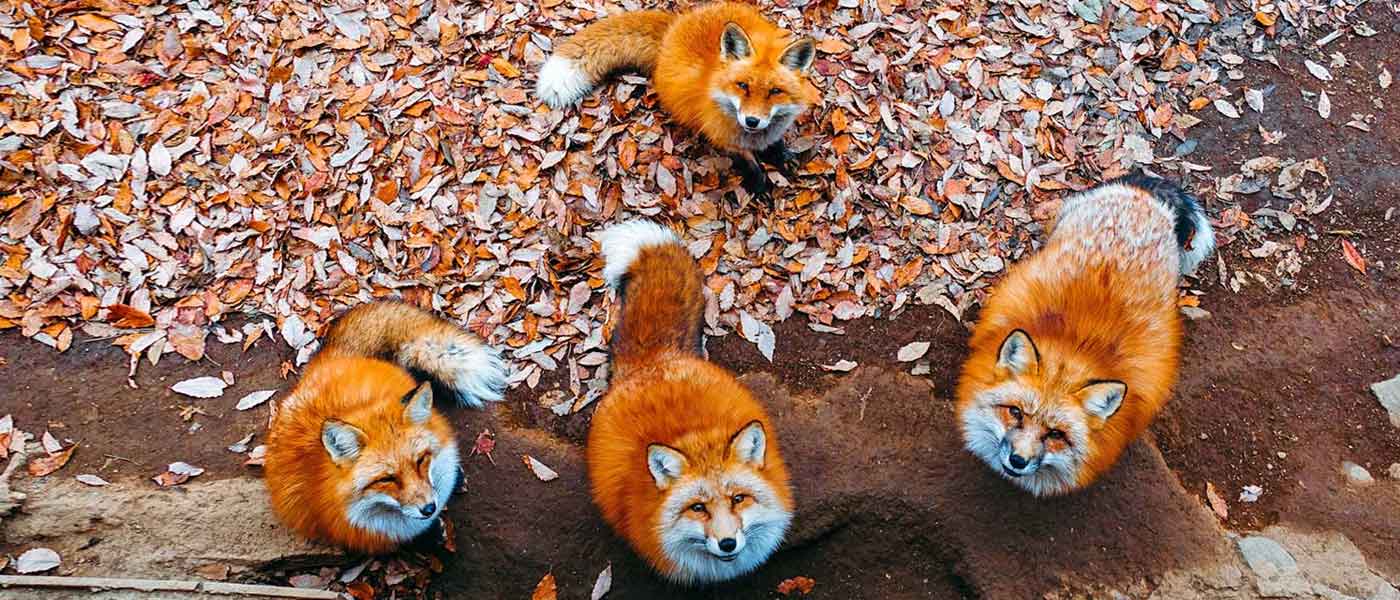
Seeing them all up close, the “residents” looked active, happy, healthy, and well taken care of to me. Also, the strict rules that the sanctuary implements about not touching these animals was a plus for me, as well as the fact that the original foxes that were taken in here were saved from slaughter from the fur trade (according to the establishment’s caretakers).
Though of course, I do admit that there can be certain improvements that can be made here — such as better cages, better processes, more English materials to explain how they function, etc. so much like me, do feel free to talk or send an email to the staff (if you can’t speak Japanese) about your comments since they’re very open to hearing what their visitors think.
NOTE: Foxes typically shed their fur at the beginning of spring and have shorter fur (or look less fluffier) by summer, making them look ‘patchy’. Come autumn and winter, the foxes will start to grow more fur to protect themselves from the cold.
.
I’ve read reviews online who have commented on their patchy furs, saying that they looked unhealthy because of that — but I think they didn’t know this natural process of fur shedding by foxes that’s why it led them to think as such
Nevertheless, even if they’re raised in-house, they’re still brought up in a way that aims to preserve their natural characteristics. (For example, they let the foxes do their infamous cub separation process which you can learn more about on their website here.)
» Aspect of Ethics
I have seen a couple of mixed reactions about this place and I totally understand the concern. First of all, much like a zoo, there’s no denying that this establishment profits from these animals; however, I personally have no qualms about that kind of set-up for as long as they properly take care of the foxes — which they seemingly do here!
Their barking aside, foxes still remain to be delightful and captivating in my books, and I’m so glad that a place like this exists! At the end of this experience, I realized that they just might well be my spirit animal — they sleep a lot, eat a lot, are mischievous, and have a scream that can rage hell on Earth if annoyed. *wink*
All in all, if you hate zoo environments or any sort of animal enclosure no matter if the conditions are well and good, I suggest that you don’t visit this place or it will make you uncomfortable. As for me, I just try to keep an open mind and I don’t immediately shun every animal park, especially if the animals are well-cared for. That being said, I remain to recommend this place to you guys!
If you go further out, you will see a shrine with kitsune statues and a torii gate that’s common for Shinto shrines.
If it helps to note, foxes are also one of the few animals who don’t suffer any type of stress when under captivity — a lot of researchers are looking into this trait that they have so that they could possibly find out how they can alleviate stress for other animals in captivity.
In Miyagi Zao Fox village, their foxes can live up to 14 years old! I definitely see that as added proof that they’re fine being here.
Now, some might suggest releasing them into the wild after a certain age too, but I think that’s not a good idea because given their upbringing, they might not survive out there anymore and their chances of survival will become slimmer. Not to mention that they’re more susceptible to diseases in the wild.
Secondly, I wholly agree with the concept of leaving animals to the wild. However, given today’s times, most of them might need some sort of protection. Looking at the facts, a fox in the wild has an average life span of 2-4 years only because of hunting practices and road accidents. (You cannot imagine the number of people who would ‘kill’ for fox fur, nor the number of people who do fox hunting for fun/sport like the UK for example).
NOTE: Once you come back, there is a small souvenir/gift shop behind the reception. Rest assured, if you see products with fur, they’re made from fake fur (like plushies etc.), except for a few key chains that you will find there which are made from real fox fur — HOWEVER, those are all from Norway and Denmark (…a bit ironic, yeah; I hope they stop selling that). Nevertheless, the Fox Village says that they never breed their foxes for fur.
As I spent more time inside, I finally got the chance to hear how a fox’s “bark” sounds like — and heck… this was the only thing that was NOT cute about them. Their voice certainly sounded like a blood-curdling scream that can only be the stuff of nightmares! (If you want to hear ‘what does the fox say’, just watch the YouTube video I have above.)




